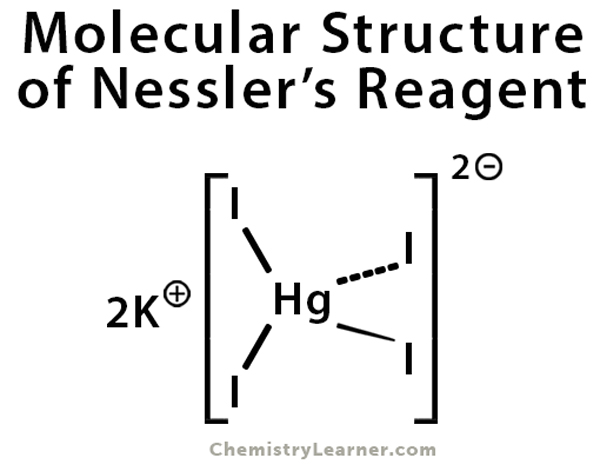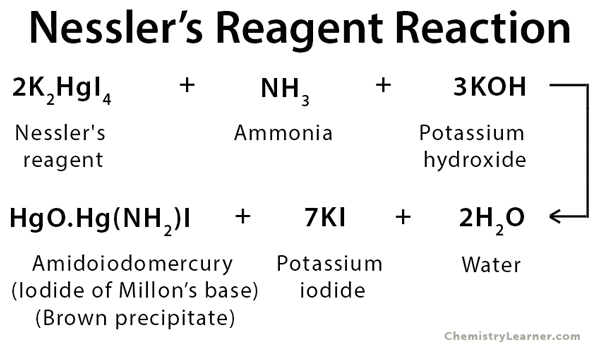Home / Organic Chemistry / Nessler’s Reagent
Nessler’s Reagent
Table Of Contents
Definition: What is Nessler’s Reagent?
Nessler’s reagent, or potassium tetraiodomercurate, is an organic compound and consists of potassium cations and tetraiodomercurate (II) anion. The molecular formula is given by [K2(HgI4)]. It is used to detect ammonia. The reagent has been named after German chemist Julius Nessler [1].
Preparation of Nessler’s Reagent
Nessler’s reagent is prepared by mixing 2 g potassium iodide in 5 ml water. To this solution, 3 g of mercury (II) iodide is added, and the resulting solution is made to 20 ml. Finally, 40 g potassium hydroxide (30 %) is added to provide the alkaline base [1].
Application of Nessler’s Reagent
Nessler’s reagent is used to detect ammonia. The solution becomes deep yellow in the presence of ammonia until a brown precipitate is formed [2].
References
- Definition and Preparation – acs.org
- Reaction – Researchgate.net






